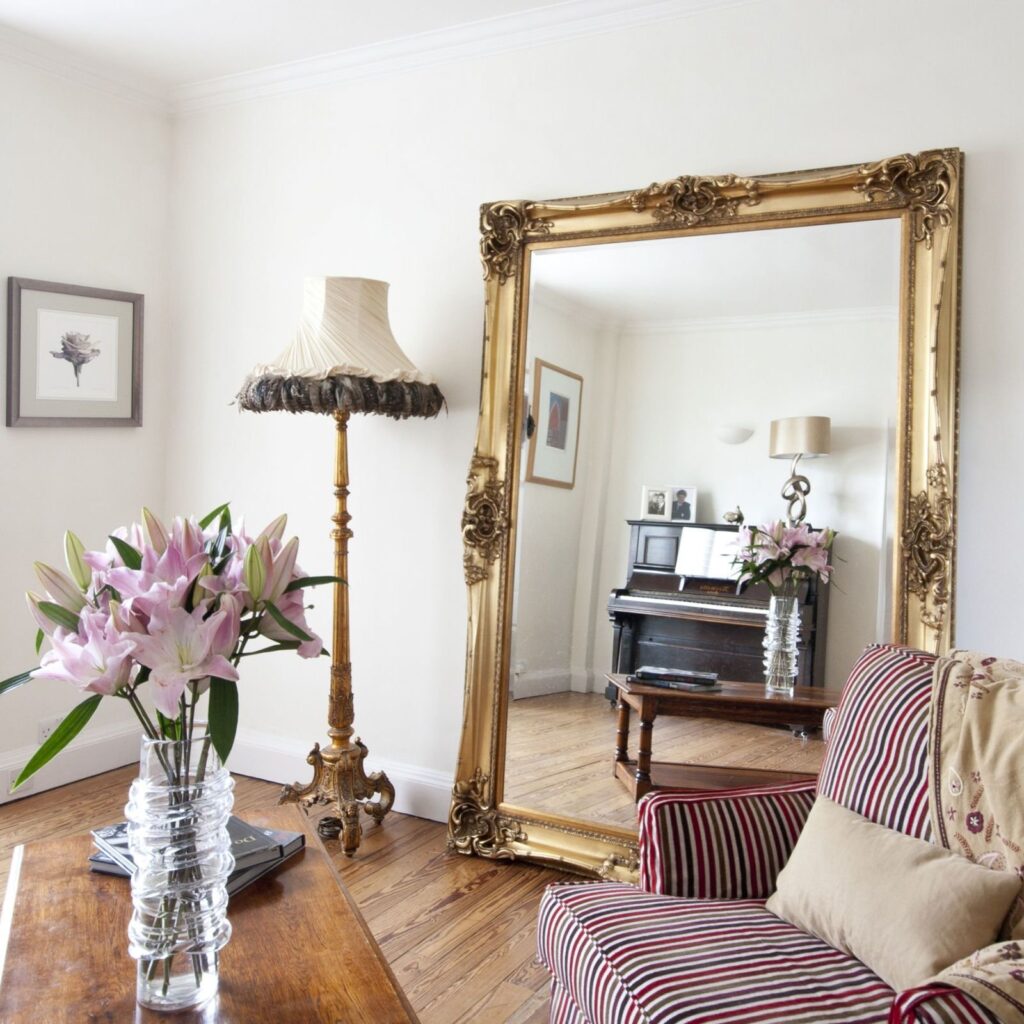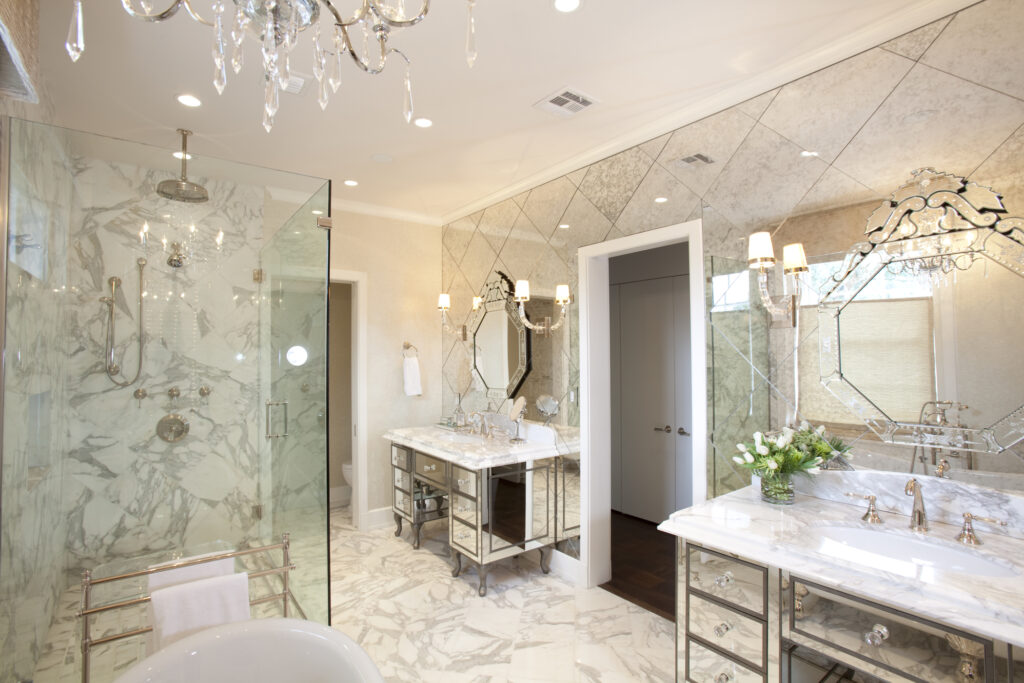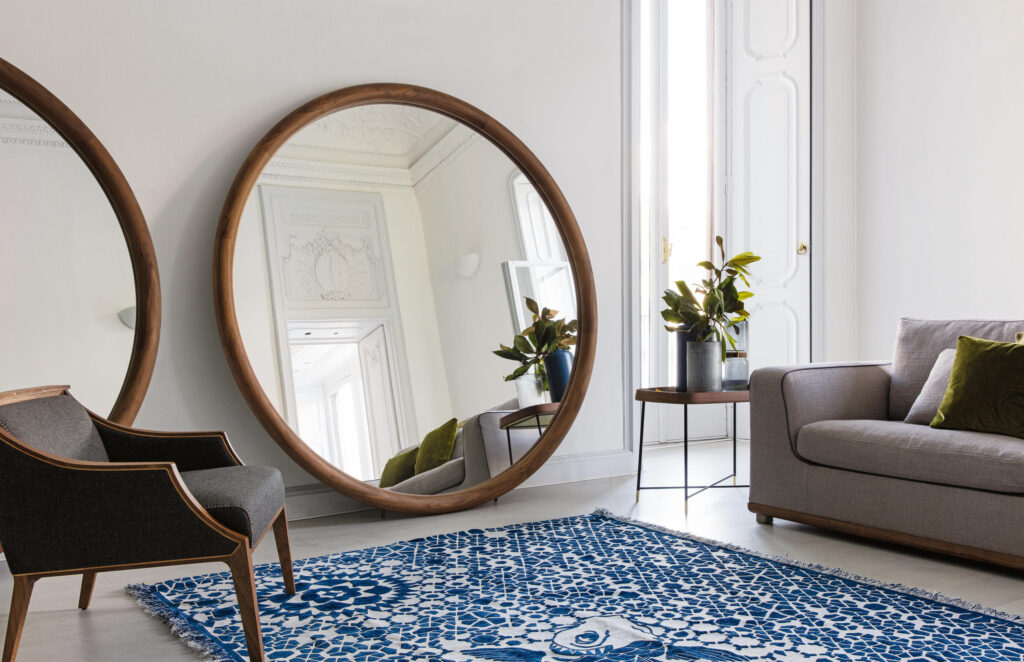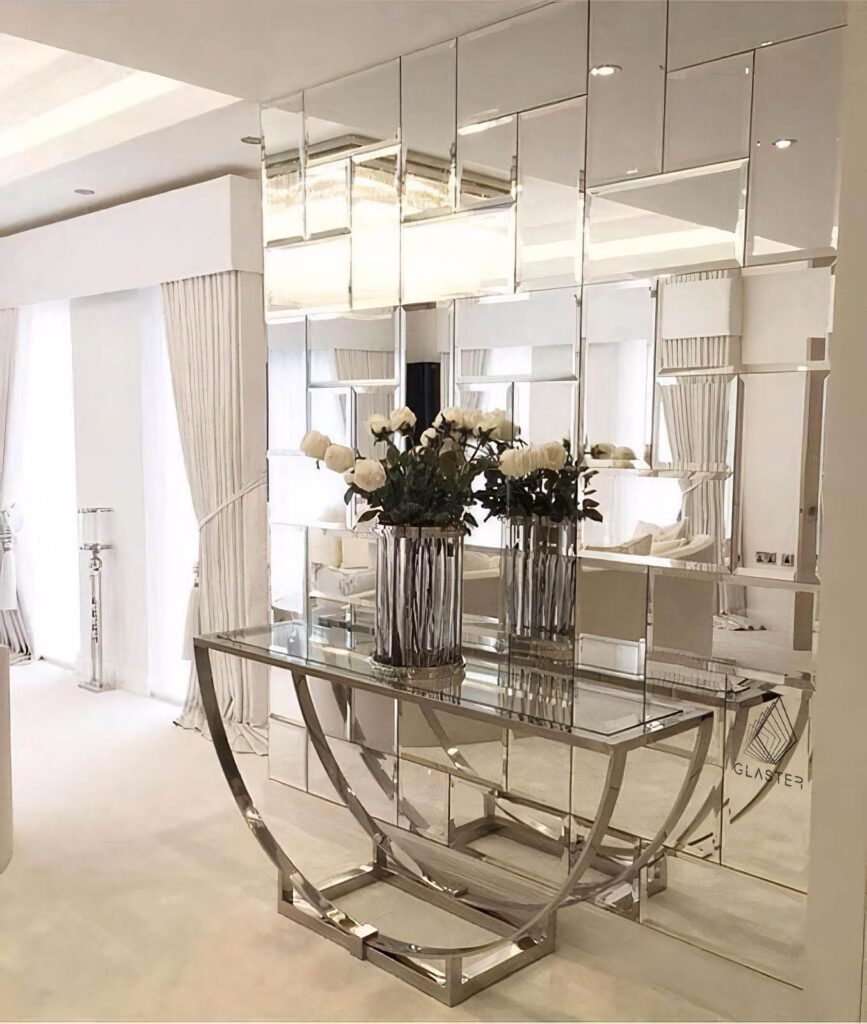
Introduction: Historical Role and Significance of Mirrors in Interior Design.
Mirrors have long captured the attention of humanity not only through their reflections but also their mystical properties. In ancient times, the mirror was considered a symbol of water, a place where one could see their reflection. As civilizations evolved, mirrors began to be made from metals such as bronze and were used for religious and ritualistic purposes.
Later, with technological advancements, glass mirrors emerged, initially accessible only to the wealthy and privileged. They symbolized luxury and wealth. During the Renaissance era, mirrors became integral to palace and mansion interiors, adding airiness and spaciousness to rooms.
Over time, the role of mirrors in interior design evolved. They ceased to be mere symbols of luxury and started to be actively used in decor, architecture, and design. Mirrors became an essential element of interior design, deftly playing with light, expanding spaces, and adding depth to rooms.
Today, in the modern world of interior design, mirrors are used in various styles and concepts, with their significance undiminished. They remain a crucial element capable of radically transforming any space.
Functional Applications: How Mirrors Can Visually Expand Space and Enhance Lighting.
Mirrors play a pivotal role in interior design, not only adding aesthetic appeal but also serving several functional purposes.
Visual expansion of space. Mirrors can create an illusion of greater space. This is particularly relevant in small rooms. When a mirror is placed on a wall, it reflects the opposite part of the room, making it appear much more spacious than it actually is. For instance, mirrored panels or cabinets can visually double a room’s space.
Enhancement of lighting. Mirrors can significantly amplify both natural and artificial light within a room. Positioning a mirror opposite a window or a light source allows it to reflect and evenly distribute light throughout the room. This is particularly useful in dark rooms or windowless spaces.
Attention accentuation. Mirrors can draw attention to specific interior elements or architectural features. For example, a mirror placed above a fireplace can emphasize its beauty and make it the central element of the room.
Creation of dynamism. Mirrors can introduce dynamism and movement into static spaces. Objects and people reflected in mirrors give the impression of activity and liveliness in a room.
In conclusion, mirrors are more than just decorative elements. They are powerful tools in the hands of designers, aiding in transforming spaces, making them brighter, more spacious, and intriguing.

Design and Styling: From Classic Frames to Modern Solutions – Choosing the Right Mirror for Your Specific Interior.
Mirrors have long become an integral part of interior decor. However, their impact on style and atmosphere depends on the mirror’s design, shape, and frame. Selecting the appropriate mirror can either complement the interior or become its bold accent.
Classic frames. Mirrors with traditional wooden or metallic frames, often adorned with carvings or gilding, fit seamlessly into classic interiors. Such frames add a touch of luxury, warmth, and vintage charm to a room.
Modern solutions. Contemporary interiors often demand simpler and more minimalist forms. Frameless mirrors, mirrors with unconventional geometric shapes, or those with minimalist metallic frames can serve as stylish accents in modern interiors.
Loft and industrial styles. For such interiors, mirrors with rough metal or wooden frames are suitable. Black or untreated metal can infuse an industrial vibe into the interior.
Rural and boho styles. Mirrors with frames made from natural materials like wood, bamboo, or even fabric will harmonize well with cozy and relaxed country or boho-style interiors.
Multi-functional mirrors. Some modern designs combine storage or lighting functions. Mirrors with built-in lights or shelves can be both practical and stylish solutions for various interiors.
When choosing a mirror for your interior, it’s important to consider not only its design and size but also the overall room style, color palette, and other decorative elements. A well-chosen mirror can become an exquisite adornment for any home or apartment.

Mirror Placement: Rules and Tips for Arrangement in Different Home Areas.
Mirrors are potent tools in interior design. Proper placement can enhance lighting, visually enlarge space, and add style and sophistication. Let’s explore key rules and tips for arranging mirrors in different home areas.
Entryway.
A mirror in the entryway is not only convenient for a last-minute check before heading out but also a way to visually expand narrow and small spaces.
It’s advisable to avoid placing a mirror directly across from the entrance door, as this might create a sense of repulsion for guests.
Living Room.
Mirrors can amplify natural light. Placing them opposite windows can effectively double the amount of light in the room.
Large mirrors or mirror panels can visually enlarge space and make the living room more airy.
Bedroom.
In small bedrooms, a mirror opposite a window can visually expand space and add light.
Remember to place mirrors thoughtfully to avoid reflecting undesirable views or clutter.
Bathroom.
Mirrors are a bathroom essential. Consider placing them above the sink or vanity for functional use.
A well-placed mirror can make a small bathroom appear more spacious.
Dining Area.
A mirror in the dining area can reflect natural light from windows and make the space feel brighter.
Placing a mirror on a wall opposite artwork or an interesting architectural detail can create a captivating visual effect.
Conclusion.
Mirrors are versatile design elements that can transform any room. Their placement should be strategic to enhance lighting, create illusions of space, and reflect the room’s overall style. Whether for functional or aesthetic purposes, mirrors are indispensable tools in the art of interior design.

Mirror Placement: Rules and Tips for Arrangement in Different Home Areas.
Mirrors have long been an integral part of interior design, serving not only a practical but also an aesthetic function. Proper mirror placement can transform a space, making it brighter and visually larger. Let’s consider some key tips and rules for mirror placement in the home.
Entryway.
A mirror in the entryway helps you take one last look at yourself before leaving and visually enlarges the often limited space of this area.
It’s advisable to avoid placing the mirror directly opposite the entrance door to prevent creating a sense of repulsion.
Living Room.
In the living room, mirrors can amplify the light from chandeliers and lamps. Placing them opposite light sources can create interesting lighting accents.
Large mirrors or even mirrored panels on the walls can visually expand space, making the room feel more spacious.
Bedroom.
While many prefer to avoid mirrors in the bedroom due to superstitions, a properly chosen and placed mirror can add coziness to the room.
Framed mirrors or mirrored surfaces on furniture can become stylish decorative elements.
Bathrooms.
Here, mirrors typically combine practical and decorative functions. Reflective surfaces enlarge space and enhance light.
Mirrors with integrated lighting or built-in clocks and humidity sensors add functionality.
Kitchen.
Although mirrors in the kitchen are not a standard solution, mirrored backsplashes or elements on cabinet fronts can make the kitchen brighter and add a touch of modern chic.
When placing mirrors, it’s important to consider what they will reflect. Ideally, they should reflect light or attractive interior elements rather than clutter or less appealing corners of the room.

Conclusion: Innovative and Traditional Approaches to Using Mirrors in Modern Interiors.
Mirrors have long served not only a practical but also a decorative purpose in interior design. From royal palaces to modern apartments, these reflective surfaces adorn homes, bringing light, space, and style to them.
Traditional approaches to using mirrors often include:
Mirrors in ornate gilded or carved frames for creating luxurious and sophisticated Empire-style interiors.
Mirror panels or decorative elements in classic styles, such as Art Deco.
The use of mirrors in specific functional zones, such as entryways, bathrooms, or bedrooms.
However, innovative approaches expand the boundaries of tradition:
Mirrors of non-standard shapes and sizes that become central design elements.
Mirrors with diverse finishes, matte, colored, or with an “antique” glass effect.
Integration of mirrors into furniture and architectural solutions, such as mirrored ceilings or mirror walls/dividers.
The use of mirrors in unexpected places, such as the kitchen or even the garden.
In conclusion, despite centuries of use, mirrors remain relevant and continue to inspire designers with new and interesting solutions. In modern interior design, they represent a tool that combines practical utility and aesthetic appeal, highlighting the uniqueness and character of each space.
